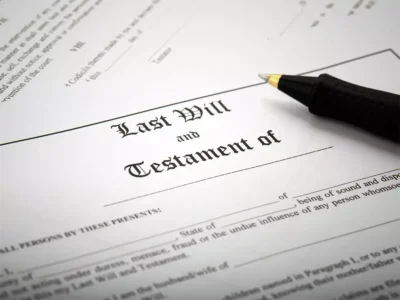The Genesis of Asbestos Trust Funds
So, how did these asbestos trust funds even come about? Well, it’s a pretty direct result of the sheer volume of asbestos-related lawsuits that started piling up. Companies that made or used asbestos were getting sued left and right by people who got sick from it. Facing massive liabilities, many of these companies ended up declaring bankruptcy.
To deal with this mess, the courts stepped in and started requiring these bankrupt companies to set aside money in trust funds. Asbestos trust funds were a way to make sure that people who were harmed by asbestos could still get some compensation, even if the company that hurt them was no longer around. It was a way to handle the claims in a more organized fashion than just letting the lawsuits drag on forever.
Purpose and Structure of Trust Funds
The main goal of an asbestos trust fund is pretty simple: to compensate people who have been diagnosed with asbestos-related diseases. These diseases, like mesothelioma and asbestosis, can take decades to develop after exposure, so the trust funds are designed to be around for the long haul. The structure of these funds can be a bit complex, but generally, they’re managed by trustees who are responsible for evaluating claims and distributing payments.
Here’s a quick rundown of how they usually work:
- A bankrupt company puts assets (money, property, etc.) into the trust.
- The trust develops a set of rules for how to evaluate and pay claims.
- People who believe they’re eligible file claims with the trust.
- The trustees review the claims and, if approved, issue payments.
Distinction from Traditional Litigation
Okay, so how are these trust funds different from just suing a company in court? Well, there are a few key differences. First off, with a trust fund, you’re dealing with a set amount of money. The trust has to manage its resources carefully to make sure there’s enough to pay everyone who’s eligible. This often means that payments are lower than what you might get in a lawsuit.
Secondly, the process is usually faster and less adversarial than a traditional lawsuit. You’re not going to court, and you’re not facing off against a company’s lawyers. Instead, you’re submitting a claim to the trust and letting them evaluate it. Asbestos manufacturers may establish these funds as part of bankruptcy proceedings, offering a streamlined alternative to litigation. Finally, trust funds offer a degree of certainty. While the amount you’ll receive might not be huge, you know that you’ll likely get something, which isn’t always the case with a lawsuit.
Eligibility Criteria for Asbestos Trust Fund Claims
Documenting Asbestos Exposure History
Figuring out if you’re even eligible for compensation from an asbestos trust fund starts with proving you were exposed to asbestos. It’s not enough to just suspect it; you need solid evidence. This usually means tracking down where you worked, what products you handled, and when all this happened. Think of it like detective work.
- Employment records are gold. Pay stubs, union records, anything that shows where you were employed and when.
- Witness statements can help fill in the gaps. If you worked alongside someone who remembers the asbestos products, their testimony can be really important.
- Product information is key. If you know the specific brand of asbestos you were exposed to, that strengthens your case. You might need to do some digging to find this out.
It can be a pain, especially if it was decades ago, but the more details you can provide about your asbestos exposure, the better your chances.
Medical Diagnosis Requirements
Okay, so you think you were exposed. Now you need a medical diagnosis linking your illness to that exposure. This isn’t just any doctor’s visit; it needs to be a specialist who understands asbestos-related diseases.
- A diagnosis of mesothelioma, asbestosis, or asbestos-related lung cancer is usually required.
- Medical records are super important. These need to show the diagnosis, the tests that were done (like X-rays or biopsies), and the doctor’s opinion on how asbestos caused the illness.
- Expert testimony might be needed. Sometimes, the trust fund wants an independent doctor to review your case and confirm the link between asbestos and your disease.
Without a solid medical diagnosis, it’s going to be tough to get anywhere with your asbestos trust funds claim.
Statute of Limitations Considerations
Time is of the essence. Every state has a statute of limitations, which is basically a deadline for filing a claim. Miss it, and you’re out of luck. It’s not always straightforward to figure out when the clock starts ticking.
- The clock usually starts when you’re diagnosed with an asbestos-related disease, not when you were exposed.
- Different states have different deadlines. Some might give you a year or two, others longer. You need to know the rules in your state.
- Trust funds might have their own deadlines, too. Even if you’re within the state’s statute of limitations, the trust fund could have a shorter window.
Don’t wait. As soon as you’re diagnosed, talk to a lawyer to figure out the deadlines and make sure you don’t miss them.
The Asbestos Trust Fund Claims Process
Gathering Essential Documentation
Okay, so you’re thinking about filing a claim with an asbestos trust fund? The first thing you absolutely have to do is get all your paperwork in order. This isn’t just about having some documents; it’s about having the right documents. Think of it like this: you’re building a case, and documents are the bricks. Without enough bricks, your case will fall apart. You’ll need things like:
- Employment records: These show where you worked and when. The more specific, the better.
- Medical records: This is where your diagnosis comes in. You’ll need doctor’s notes, test results, and anything else that proves you have an asbestos-related disease.
- Exposure history: This can be tricky, but it’s super important. Try to remember where you might have been exposed to asbestos. Maybe it was at a construction site, a factory, or even at home. Any detail helps. You can learn more about compensation factors to consider.
Submitting Your Claim Application
Alright, you’ve got all your documents together. Now it’s time to actually file your claim. Each trust fund has its own specific application process, so pay close attention to the instructions. Don’t just assume they’re all the same, because they’re not! Usually, you can find the application forms on the trust fund’s website. Fill everything out completely and honestly. Double-check everything before you send it in. Missing information can cause delays, or even a denial. Make sure you understand the criteria of the relevant fund to avoid denial.
Claim Review and Evaluation Procedures
So, you’ve submitted your claim. Now what? Well, now you wait. The trust fund will review your application and all the supporting documents. They’ll be looking to see if you meet their eligibility requirements and if your exposure history matches their records. This can take some time, so be patient. They might ask for more information, so be ready to respond quickly. The trust fund might also have a medical expert review your case to confirm your diagnosis.
Understanding Payment Schedules
If your claim is approved, congratulations! But don’t expect a check in the mail tomorrow. Asbestos trust funds often have payment schedules, which means they pay out claims over time. This is because they have a limited amount of money and they need to make sure they can pay everyone who’s eligible. The payment amount might also be reduced based on something called a “pro rata” factor. This means that everyone gets a percentage of what they’re owed, rather than the full amount. It’s not ideal, but it’s how the trust funds work. The payment schedule will vary from trust to trust, so make sure you understand how it works for the specific fund you’re dealing with.
Maximizing Your Asbestos Trust Fund Claims
Navigating Multiple Trust Fund Claims
So, you’ve figured out that you might be able to file claims with more than one asbestos trust fund? That’s actually pretty common. Many people were exposed to asbestos from multiple sources, meaning they can pursue compensation from several trusts. It’s not always a walk in the park, though. Each trust has its own rules, its own forms, and its own way of doing things. Keeping track of all that can get messy fast. Think of it like this: you’re not just filing one claim; you’re juggling a bunch of them at the same time. It’s important to understand the trust fund process for each to avoid mistakes.
The Role of Legal Representation
Can you file an asbestos trust fund claim on your own? Sure, you can. But should you? That’s a different question. A lawyer who knows the ins and outs of asbestos claims can be a huge help. They know which trusts to file with, what paperwork you need, and how to present your case in the best possible light. Plus, they can handle all the back-and-forth with the trust administrators, so you don’t have to. It’s like having someone who speaks the language of asbestos trusts fluently. They can also help you understand the complexities of asbestos bankruptcy and how it affects your claim.
Strategies for Expedited Claim Processing
Nobody wants to wait forever to get their claim processed. So, what can you do to speed things up? Well, the first thing is to make sure you have all your ducks in a row. That means gathering all the necessary documents, like your work history, medical records, and any other proof of exposure. The more complete your application is, the faster it’s likely to be processed. Also, some trusts have expedited review processes for certain types of claims, like those involving serious illnesses. A lawyer can help you figure out if you qualify for one of those. Here are some things to keep in mind:
- Complete applications are key.
- Understand the trust’s specific requirements.
- Consider if you qualify for expedited review.
Common Challenges in Asbestos Trust Fund Claims
Asbestos trust fund claims, while designed to provide compensation to those harmed by asbestos exposure, aren’t always straightforward. Several hurdles can arise during the process, potentially delaying or even preventing a successful outcome. It’s good to be aware of these potential issues upfront.
Addressing Insufficient Documentation
One of the most frequent problems is insufficient documentation. Trust funds require solid proof of both asbestos exposure and a related diagnosis. This can be tricky, especially if the exposure happened decades ago.
- Missing employment records can be a major setback.
- Lack of detailed medical history makes it harder to link the illness to asbestos.
- Vague or incomplete product information can also cause issues.
Disputed Exposure or Diagnosis
Even with documentation, disputes can arise. The trust fund might question the validity of the exposure history, arguing that the evidence doesn’t definitively link the claimant to asbestos. Similarly, the diagnosis itself might be challenged, especially if there are other potential causes for the illness. Demonstrating the defendant’s history of asbestos exposure to others can help prove negligence.
Delays in Claim Resolution
Delays are almost inevitable in asbestos trust fund claims. The sheer volume of claims, combined with the complexity of the review process, can lead to significant waiting periods.
- Backlogs at the trust fund level contribute to the problem.
- The need for additional investigation or expert review can further extend the timeline.
- Negotiations over payment amounts can also cause delays. Asbestos victims can file multiple trust fund claims if exposed at different worksites, potentially complicating the process and leading to further delays.
Post-Claim Resolution and Appeals
Understanding Claim Denials
So, you’ve gotten a letter saying your asbestos trust fund claim was denied. It happens. The first thing to do is not panic. Claim denials aren’t always the end of the road. It’s important to figure out why the claim was denied. Common reasons include:
- Insufficient documentation of exposure. Maybe you didn’t provide enough proof you worked at a specific job site.
- Questions about the medical diagnosis. The trust might need more information to confirm the diagnosis.
- Missing information on the claim form. Even a small error can cause a denial.
The Appeals Process for Asbestos Trust Fund Claims
If your claim is denied, you usually have the option to appeal. The appeal process involves several steps. First, you’ll need to file a formal appeal within a specific timeframe. This timeframe is usually outlined in the denial letter, so read it carefully. Next, you’ll need to gather any additional documentation that supports your claim. This could include:
- Additional work records
- Expert witness testimony
- More detailed medical records
Then, you submit all of this to the trust. The trust will review the new information and make a final decision. Keep in mind that the appeals process can take time, so be patient.
Seeking Further Legal Recourse
What if the appeal is also denied? Well, it might be time to consider other options. One option is to consult with an attorney who specializes in asbestos litigation. An attorney can assess your case and advise you on the best course of action. They can also help you understand the implications of evidence destruction and how it might affect your case. Depending on the circumstances, you might be able to pursue a lawsuit against the responsible parties. It’s a good idea to explore all available avenues to get the compensation you deserve.
Future Outlook for Asbestos Trust Fund Claims
Impact of Emerging Medical Research
Medical research is always changing, and that includes what we know about asbestos-related diseases. New studies could change how we diagnose these illnesses, and that could affect who is eligible for asbestos trust fund claims. For example, if a new type of cancer is linked to asbestos exposure, more people might be able to file claims. It’s also possible that new research could lead to better treatments, which could affect the amount of compensation people receive. Here are some things to consider:
- Changes in diagnostic criteria.
- Identification of new asbestos-related diseases.
- Development of more effective treatments.
Legislative Changes Affecting Trust Funds
Laws about asbestos trust funds can change, and these changes can have a big impact. New laws could make it easier or harder to file a claim, or they could change how much money is available. For instance, there might be new rules about how long you have to file a claim, or there could be changes to how the trust funds are managed. Keeping an eye on these legislative changes is important. Here’s what to watch for:
- Changes to statute of limitations.
- New regulations on trust fund management.
- Legislation affecting the claims process.
Ensuring Long-Term Viability of Claims
It’s important to make sure that asbestos trust funds have enough money to pay claims in the future. This means managing the funds carefully and making sure that companies that used asbestos are held responsible. If the funds run out of money, people who are sick from asbestos exposure might not get the compensation they deserve. Here are some ways to help ensure the long-term viability of personal injury lawsuits:
- Responsible investment strategies.
- Continued contributions from liable companies.
- Efficient claims processing to minimize costs.
Continue Your Research












Comments